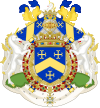Life
He was the son of Charles de Neufville (1566–1642), Marquis of Villeroy and of Alincourt, and his second wife, Jacqueline de Harlay. [1] His grandfather Nicolas de Neufville served as a secretary of state under Charles IX, Henry III, Henry IV, and Louis XIII.
Nicolas de Neufville studied at the court of Louis XIII as an enfant d’honneur. In 1615, he was made governor of the Lyonnais under his father's supervision – an effective governor, he served in that post until his father's death in 1642. He served in Italy with Lesdiguières and was promoted to marshal of France on 20 October 1646 thanks to being the protégé of cardinal Jules Mazarin.
In March 1646, the queen-mother made marshal de Villeroy governor of Louis XIV, under Mazarin's authority chosen as "surintendent for the government and conduct of the king". It is difficult to attribute him any good or bad influence in the young king's education. He was made duke of Villeroy in September 1651 [2] and admitted to the peerage of France in 1663. He served as Grand Master of France at Louis XIV's coronation and was made a knight of the Order of the Holy Spirit on 31 December 1661. Louis XIV also made him head of the Conseil royal des finances in 1661, a role (of particular importance at the time of the suppression of the surintendance des finances, but becoming largely honorific) he held until his death.
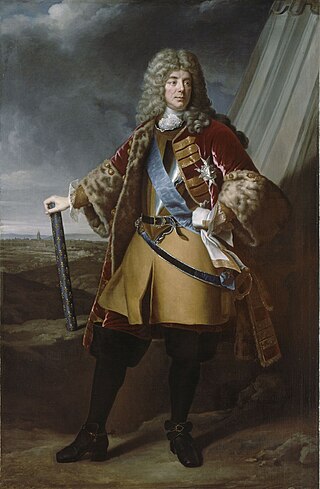
François de Neufville, 2nd Duke of Villeroy was a French nobleman and military officer.

François Michel Le Tellier, Marquis de Louvois was the French Secretary of State for War during a significant part of the reign of Louis XIV. He is commonly referred to as "Louvois". Together with his father, Michel le Tellier, he oversaw an increase in the numbers of the French Army, eventually reaching 340,000 soldiers – an army that would fight four wars between 1667 and 1713. Louvois was a key military and strategic advisor to Louis XIV, who transformed the French Army into an instrument of royal authority and foreign policy.
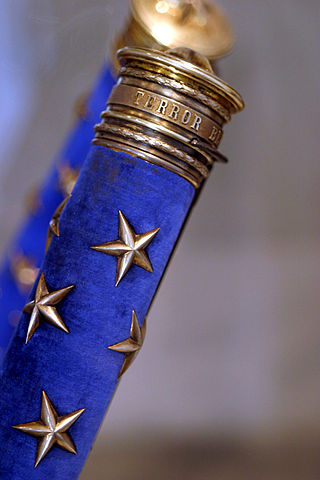
Marshal of France is a French military distinction, rather than a military rank, that is awarded to generals for exceptional achievements. The title has been awarded since 1185, though briefly abolished (1793–1804) and for a period dormant (1870–1916). It was one of the Great Officers of the Crown of France during the Ancien Régime and Bourbon Restoration, and one of the Grand Dignitaries of the Empire during the First French Empire.

Abel Servien, marquis de Sablé et de Boisdauphin and comte de La Roche des Aubiers was a French diplomat who served Cardinal Mazarin and signed for the French the Treaty of Westphalia. He was an early member of the noblesse de robe in the service of the French state.

Louis Charles César Le Tellier, Duke d'Estrées was a French military commander and Marshal of France.

Simon Arnauld de Pomponne, Seigneur and then Marquis (1682) of Pomponne was a French diplomat and minister.

Louis François Marie Le Tellier Marquis of Barbezieux was a French statesman.

The Life Guards was the senior formation of the King of France's Household Cavalry within the Maison militaire du roi de France.

Nicolas IV de Neufville, seigneur de Villeroy was a secretary of state under four kings of France: Charles IX, Henry III, Henry IV, and Louis XIII. The most distinguished of all sixteenth-century French secretaries, Villeroy rose to prominence during the French Wars of Religion, a period of almost insoluble difficulties for the French monarchy and government. Despite faithfully serving Henry III, Villeroy found himself sacked by him without explanation in 1588, along with all the king's ministers. He was reinstated by Henry IV in 1594 and became more important than ever before. He remained in office until his death in 1617 during the reign of Louis XIII.
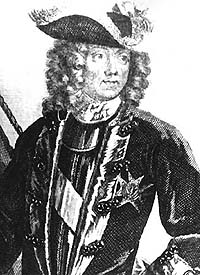
Nicolas Chalon du Blé, marquis d'Uxelles and Cormatin was a French general and Foreign Minister. He was also created a knight and Marshal of France by Louis XIV, and was a diplomat for Louis XIV and Philippe II, Duke of Orléans.

The Neufville de Villeroy family was a French noble family, the most notable member of which was François de Neufville, duc de Villeroi. It was descended from a finance minister to Louis XII.

Martin Ruzé, Lord of Beaulieu of Longjumeau and Chilly was a French politician of the late sixteenth and early seventeenth century, who was Secretary of State of the Maison du Roi under Henry III of France, Henry IV of France and Louis XIII.

Louis of Lorraine was the Count of Armagnac from his father's death in 1666. The Grand Squire of France, he was a member of a cadet branch of the House of Guise, itself a cadet branch of the sovereign House of Lorraine. His descendants include Albert II, Prince of Monaco, Umberto II of Italy, and Diana Álvares Pereira de Melo, 11th Duchess of Cadaval.
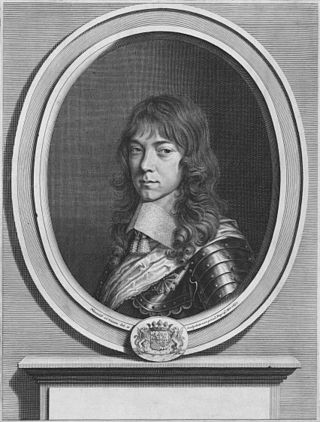
Godefroy Maurice de La Tour d'Auvergne, Duke of Bouillon was a French nobleman and member of the House of La Tour d'Auvergne, one of the most important families in France at the time. He married Marie Anne Mancini, niece of Cardinal Mazarin and had seven children.

Michel Le Tellier, marquis de Barbezieux, seigneur de Chaville et de Viroflay was a French statesman.

The hôtel de Villeroy, also the hôtel de Villeroy Bourbon or hôtel de la Poste, is a hôtel particulier, a type of large townhouse of France, at 34 rue des Bourdonnais, 9 rue des Déchargeurs, 17 rue des Halles in the 1st arrondissement of Paris. It is a designated monument historique.

François César Le Tellier, Marquis of Courtanvaux, was the marquis of Courtanvaux, Count of Tonnerre, Duke of Doudeauville, and a French aristocrat, military officer, and scientist.

François de La Rochefoucauld, 4th Duke of La Rochefoucauld was a French nobleman who succeeded his father as Duke of La Rochefoucauld and Grand Huntsman of France in January 1714 having already succeeded him as Grand Huntsman of France.

